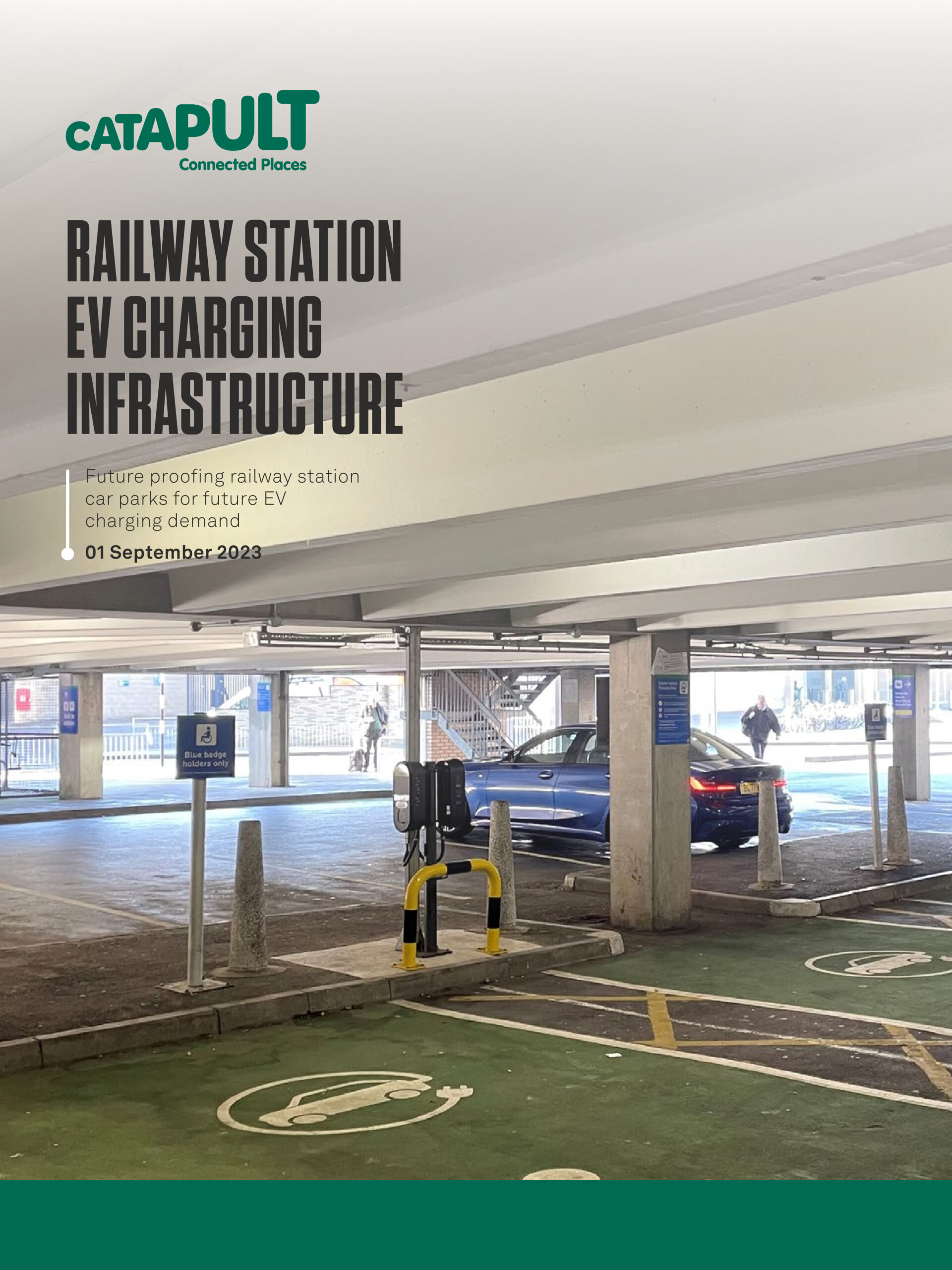The UK government has pledged to install 300,000 public charging points by 2030, however the mix of location and charging type required is still uncertain. In 2021, Connected Places Catapult published a report discussing the opportunity for public charging points at railway stations. Two years on, we have updated this report with a mix of data sources including first hand surveys. Whilst railway station car parks were our focus, the findings can be applied to many other types of destinations.
Through primary analysis of ZapMap data of charge point utilisation, we investigated EV user behaviours at railway stations. The results suggest that charging points at stations are attracting not just railway users but also other local consumers, highlighting the potential commercial benefits of EV charging.
We conducted a firsthand survey at a popular commuter station, Reading Railway Station in Berkshire, to gather data regarding charging. Almost 10% of all the vehicles in the car park were electric, much higher than the regional and national average. Of the EVs in the car park, 17.5% were charging; scaling these results in line with the forecast of EVs on the road in 2050 could provide suitable estimates for future charging demand. This survey uncovered useful information about current charging behaviour and would be a valuable exercise to conduct at a range of destinations.
Estimating future demand for public charging is a complex task since EV battery advancements and home charging capabilities will evolve. Higher powered charging, and greater capacity batteries will mean charging sessions will be shorter and less frequent. However, since only 67% of UK homes have access to off street parking, there will always be a proportion of consumers relying on public charging infrastructure.
Installing the right number of devices is not the only consideration when planning for public charging infrastructure; the mix of charging speeds, the pricing model, potential incentives, and controlled allocation of charging bays can all contribute to the attractiveness of chargers. Competitively priced charging sessions may be the most important factor for attracting customers.
















